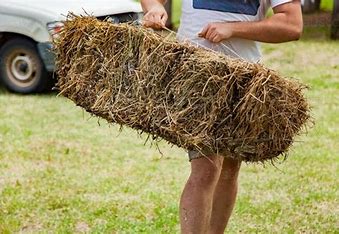Don’t waste precious hay during drought

TROY, Mo. — Drought has pushed livestock producers to hunt for emergency hay.
In a press release, University of Missouri Extension specialist Charlie Ellis said, “If you are lucky enough to have hay, take special care to reduce waste this year. “This is a good year to pinch pennies and plan on doing some extra labor.”
Proper feeding reduces waste and lowers costs with a bonus of improving animal behavior and performance, says Ellis.
Several factors figure into how farmers will reduce waste based on preferences, labor availability and climate, he says.
Ellis gives these tips:
- No hogs at the cattle trough. Cull aggressive animals that push out other animals and prevent them from getting their fair share.
- Clean your plate. Make animals clean up hay before giving them seconds. Feed when they’ve cleaned their plate. Target feeding daily only what they will consume.
- Save the best for last. This reduces spoilage and improves palatability. Feed outside-stored hay first. Then feed hay stored inside.
- Right size, right place. Choose the right size and type of feeder. Match feeder size to herd size. Place feed on a pad or elevated surface in a well-drained area.
Ellis calls unrolling hay the “bed-and-breakfast” of the hay world. Bullies and wallflowers have equal access to hay, unlike at rings, where “boss” cows can intimidate their more timid counterparts.
When feeding in winter, rolling out hay also reduces hoof damage and compaction in the feeding area. It also can help overseed pastures with legumes and distributes nutrients back onto the ground.
Some styles of bale feeders are more efficient than others. Feeder and stocking rates determine if cone or open feeders are right for the operation.
Cone feeders are the most efficient and waste less of the bale, says Ellis. Open rings are the most wasteful feeder designs.
Restrict time of access with feeders to improve body score counts, increase milk production and reduce hay waste, he says. Finding the right feeder design improves payback.
Ellis allows at least 30 inches of bunk space per cow when bunk feeding and provides one bale per 10 cows when ring feeding. Divide cows into groups based on age and “pecking order.” He also recommends feeding at the same time each day.
Daily feeding reduces food costs and waste. The less hay you put out at one time, the more you save, especially if you do your own labor, he says.
Choice of feeding ring also matters. There is less waste when feeding square bales in open rings rather than large bales in an open ring. Large, round unrolled bales fed in rings have 45% waste and are the least efficient, according to MU research.
If buying hay:
- Test hay to make sure it meets the nutritional needs of your herd.
- Know the hay’s age, how it was stored and how it was wrapped.
- Buy by the ton.
For more information
“Reducing Losses When Feeding Hay to Beef Cattle” (MU Extension guide G4570), available for free download at www.extension.missouri.edu/g4570.
Alliance for Grassland Renewal, www.GrasslandRenewal.org.
Miss Clipping Out Stories to Save for Later?
Click the Purchase Story button below to order a print of this story. We will print it for you on matte photo paper to keep forever.

